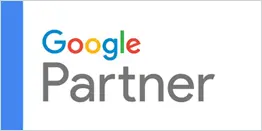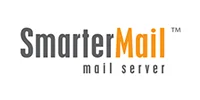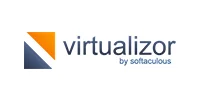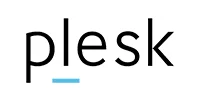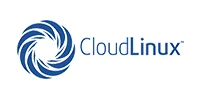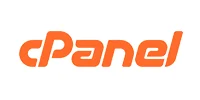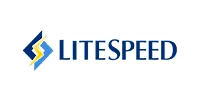Hosting services with real-time fast performance?
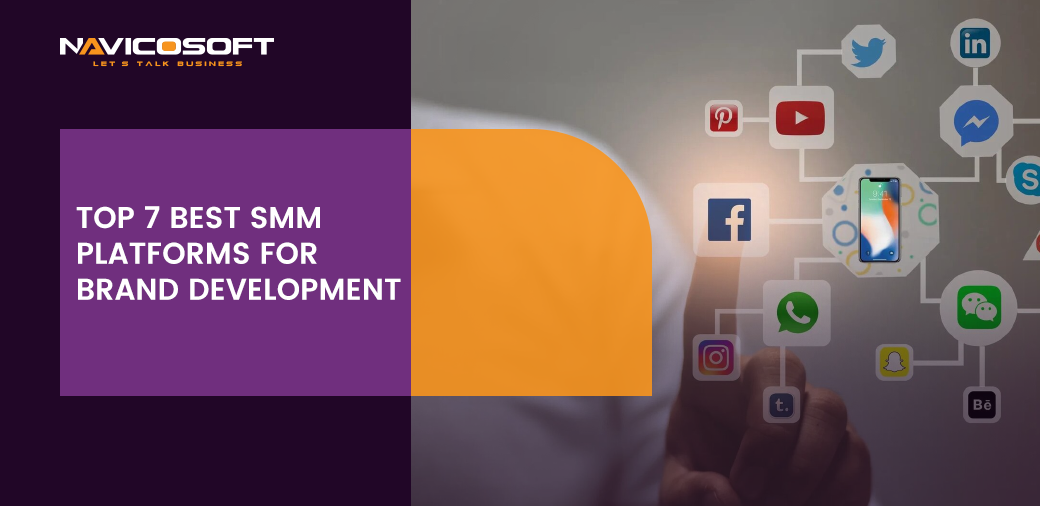
Top 7 Best SMM Platforms for Brand Development
Social media is an important tool for businesses. It aims to establish a strong online presence and connect with its target audience. Social Media Marketing (SMM) platforms have transformed how brands interact with consumers. It makes it essential for companies to navigate the landscape effectively. This article will look into the best SMM platforms and clarify their features, pros, and cons to help you make informed decisions for your brand’s development.
SMM platforms have become essential tools in today’s digital landscape, especially for brand development. Global social media usage has been increasing greatly over the past ten years; it is expected to reach about 4.4 billion users by 2025. Different renowned social networks like Facebook, Instagram, LinkedIn, and Twitter have changed. How do individuals live their lives in general? Now, we interact, distribute content, and use the internet for longer.
It modified both how businesses approach marketing and how we engage with one another on social media. Social networking channels are operated by businesses to promote their goods. Marketers have recently come upon brand-new platforms for communicating with and interacting with their target market.
However, given that there are more than 200 active social media platforms, businesses might need help to actively maintain their presence on all top social networking platforms. It’s still a huge task even if they only wish to use a few social networking sites (let’s say just the top 5). So, saving you time and effort, here is the list of
Best SMM Platforms
1: Facebook
Facebook is the ace of social media platforms for brand development, boasting over two billion active users worldwide. With its wide reach, it offers unparalleled opportunities for brand exposure. The platform supports various content formats, including text, images, videos, and live streams, empowering businesses to craft engaging content.
In social media marketing (SMM), Facebook stands as the unrivaled titan, having its influence over billions of active users worldwide. For businesses seeking to boost their brand development efforts, this platform offers many opportunities to effectively engage with their target audience. With its various features and powerful advertising tools, Facebook has become an indispensable platform for brand growth and development.
One of the most significant advantages of using Facebook for brand development lies in its unmatched audience reach. With a user base exceeding two billion, businesses can connect with a vast and diverse population, exceeding geographical boundaries and targeting specific demographics with care. The platform’s advanced ad targeting options allow brands to customize their messages based on user interests, behavior, and demographics, increasing the chances of connecting with their intended audience.
Future brand developers can also benefit from Facebook’s business pages. Which offer valuable insights and analytics? Through these analytics, brands can better understand their audience’s preferences and behaviors, allowing data-driven decisions to refine the marketing strategies further. This data-driven approach is a reason for making it among the best SMM platforms. In addition, this approach allows businesses to improve their content and advertising efforts. It can improve brand visibility and result in higher engagement rates.
Despite its numerous advantages, Facebook’s brand development landscape poses challenges. One significant challenge is the decline in organic reach for business pages. As the platform changes, it ranks content from users’ friends and family over business content. Which makes it increasingly challenging for brands to gain organic visibility? Consequently, businesses must allocate budget resources to sponsored content and advertising to maintain their brand’s presence on users’ newsfeeds.
Another consideration for brand developers on Facebook is the impact of algorithm changes. The platform frequently updates its algorithms. It affects how content is displayed and shared among users. These changes can either boost a brand’s visibility or delay it. This makes it essential for businesses to stay alert and adapt their strategies accordingly.
Moreover, the intense competition on Facebook can prove scary for brands trying to stand out. With many businesses competing for users’ attention, creating unique and compelling content becomes a serious aspect of brand development. Brands must focus on making engaging narratives, captivating visuals, and deep messages to differentiate themselves from the noise. It can leave a lasting impression on their audience.
In conclusion, Facebook remains a dominant force in social media marketing and is one of the best SMM platforms so far. It presents an incredible opportunity for brand development. Its matchless audience reaches, advanced targeting options and healthy analytics make it a powerful platform for businesses seeking to connect effectively with their target audience.
By adopting a data-driven approach and staying adaptable to algorithm changes, brands can overcome the challenges. Which are stood by decreasing organic reach and severe competition? With a strategic focus on content that gets the attention and imagination of their audience, businesses can harness Facebook advertising and marketing potential to drive brand growth, boost visibility, and achieve lasting success in the digital landscape.
2: Instagram
Focused on visual storytelling, Instagram appeals to a younger, more visually-oriented audience. It provides a perfect platform for showcasing products, services, and behind-the-scenes sights of a brand’s personality.
Regarding the best SMM platforms for Brand development, Instagram stands out as a powerful and visually appealing platform.
Pros:
With its focus on attractive images and engaging short videos, Instagram offers a unique opportunity for businesses to display their products, services, and brand personality. Let’s explore how brands can use Instagram effectively for their brand development while navigating the platform’s features and challenges.
Instagram’s visual-centric nature makes it an ideal platform for brand development to begin with. Businesses can use eye-catching images and creative videos to tell their brand’s story and connect with their audience more deeply. The platform’s emphasis on high-quality visuals enables brands to leave a lasting impression and stand out amidst the sea of content.
Moreover, Instagram’s user engagement is another valuable aspect of brand development. The platform claims high engagement rates, meaning users actively interact with content through likes, comments, and shares. This interaction gives businesses unique opportunities to build a loyal community around their brand and raise meaningful connections with their audience.
Instagram’s integration with Facebook’s advertising platform also increases its potential for brand development. Businesses can leverage Facebook’s advanced targeting options to reach their desired audience on Instagram, ensuring that their content reaches the right people at the right time.
Challenges:
However, Instagram also presents some challenges for brand development. One such challenge is the limited clickable links in posts. Different from other platforms, Instagram restricts the number of clickable links in captions and posts, making it difficult for brands to direct traffic to their websites or specific landing pages. To work around this, businesses often use the bio link and compelling call-to-action (CTA) in captions to empower users to visit their website or take desired actions.
Another consideration is the platform’s frequent algorithm changes that impact content visibility. Like Facebook, Instagram’s algorithms determine the content users see on their feeds. As algorithms change, businesses must stay updated and adapt their content strategy to maintain visibility and engagement.Despite these challenges, Instagram remains a valuable channel among the best SMM platforms for brand development. Businesses can hold the platform’s potential by creating visually appealing and engaging content, improving user engagement to build brand loyalty, and using targeted advertising to reach the right audience.
In conclusion, Instagram is an ideal SMM platform for brand development, offering a visually appealing and engaging space for businesses to connect with their audience. Brands can establish a strong online presence through creative storytelling and captivating visuals. They can foster meaningful relationships with their followers.
By understanding and navigating the platform’s features and challenges, businesses can effectively use Instagram to drive brand growth and success in the digital landscape. Taking Instagram as a complete SMM strategy can yield significant benefits for brands. Who improve their brand identity, engage with their audience, and leave a lasting impact in the competitive social media landscape.
3: Twitter
Twitter stands out with its real-time, concise content format. Brands can use it to share updates and news and directly engage in conversations with their audience.
Among the various social media marketing channels for Brand Development, Twitter shines as a dynamic and real-time platform for brand development. With its concise and fast-paced nature, Twitter offers different choices for businesses to engage with their audience, share updates, and build a strong brand identity. Let’s look into how brands can effectively leverage Twitter for their brand development while navigating the platform’s features and challenges.
Pros:
Firstly, Twitter’s quick and direct communication style makes it an ideal platform for brand development. With its limited character count, businesses can share real-time bite-sized updates, news, and announcements with their audience. This closeness allows brands to stay relevant and engaged with their followers, raising a sense of closeness and authenticity.
Moreover, Twitter’s use of hashtags helps in content discoverability. By combining relevant hashtags in their tweets, businesses can improve their visibility to users searching for specific topics or interests. This feature allows brands to reach a broader audience beyond their followers and expand their reach.
Twitter also allows brands to connect with influencers and thought leaders in their industry. By engaging with and mentioning key influencers, businesses can build valuable relationships. It gains exposure to new audiences and establishes itself as an industry leader.
Challenges:
However, Twitter’s dynamic nature and fast-paced environment come with challenges for brand development. The character limit can be restrictive, making conveying complex messages in a single tweet challenging. To overcome this, businesses can use Twitter Ads or multimedia content. Such as images and videos, to provide more in-depth information and engage their audience effectively
Another consideration is the high volume of tweets on the platform, making it easy for content to get lost in the noise. To stand out, brands must post consistently and strategically during peak times when their target audience is most active. Additionally, Twitter’s limited visual content options may have challenges for brands that rely heavily on visual storytelling. Despite this, businesses can leverage visual content by sharing links to their blog posts, infographics, or videos. That is hosted on other platforms, driving traffic to their website or other online assets.
In conclusion, Twitter is a dynamic SMM platform that offers unique opportunities for brand development. Through concise and direct communication, businesses can engage with their audience in real-time, share updates, and build brand identity. Using hashtags and connecting with influencers, brands can enhance their reach and visibility on the platform.
Despite challenges like the character limit and high tweet volume, businesses can overcome those using Twitter threads, multimedia content, and strategic posting. Embracing Twitter as part of a comprehensive SMM strategy can make significant benefits for brands. Which raises real-time connections, stays relevant, and establishes a strong online presence in the ever-evolving social media landscape.
4: LinkedIn
It is a professional networking platform ideal for B2B companies and career-oriented brands. It allows businesses to establish thought leadership and connect with other professionals.
In the realm of social media marketing (SMM) platforms for Brand development, LinkedIn stands tall as a powerful and professional platform. Unlike other social media platforms, LinkedIn is dedicated to raising professional networking and career-oriented connections. It offers unique opportunities for businesses to showcase their expertise, build thought leadership, and connect with their target audience in a more formal setting. Let’s explore how brands can effectively leverage LinkedIn ads for their brand development while navigating the platform’s features and advantages.
Pros:
First and foremost, LinkedIn’s focus on professional networking makes it a perfect platform for B2B (business-to-business) marketing. Brands can use LinkedIn to connect with other businesses, decision-makers, and industry professionals. This offers a unique opportunity to build strategic partnerships, generate leads, and expand their network of potential clients.
Moreover, LinkedIn’s emphasis on industry insights and articles helps brands display their strengths and thought leadership. Businesses can position themselves as knowledgeable authorities in their field by sharing valuable content related to their industry. It helps them in gaining trust and credibility among their target audience.
Additionally, LinkedIn serves as an effective platform for hiring and recruitment purposes. Companies can use their LinkedIn company page to showcase their company culture, job openings, and employee testimonials. This provides a window into the company’s values and work environment, attracting potential employees who align with the brand’s mission and vision.
Challenges:
However, LinkedIn’s professional nature also presents some challenges for brand development. The platform’s audience is primarily focused on business-related content. This means that B2C (business-to-consumer) brands may need help to engage their target audience effectively. To overcome this, B2C brands can still share industry-related insights. Behind-the-scenes glimpses of their brand and stories that humanize their business, resonating with their audience on a more personal level
Moreover, LinkedIn’s organic reach can be limited compared to other platforms. This means that businesses may need to invest in sponsored content. It can advertise to increase their visibility and reach a broader audience. Despite this challenge, the targeted advertising options on LinkedIn allow businesses to reach specific demographics and decision-makers. It maximizes the impact of their brand development efforts.
In conclusion, LinkedIn serves as a powerful SMM platform for brand development, with a focus on professional networking and industry insights. For B2B brands, LinkedIn offers unique opportunities to build strategic partnerships and generate leads. By showcasing thought leadership and expertise through valuable content, businesses can gain credibility and trust among their target audience. While LinkedIn’s professional nature may pose challenges for B2C brands, they can still leverage the platform. They can share engaging stories and connect with their audience more personally.
Despite limited organic reach, businesses can apply targeted advertising. This can expand their reach and achieve brand development success on LinkedIn. Embracing LinkedIn ads as part of a comprehensive SMM strategy can yield significant brand benefits. While seeking to establish themselves as industry leaders, attract potential clients and employees, and create a lasting impact in the professional networking landscape.
5: YouTube
It serves as the second-largest search engine after Google; YouTube is a powerful video-sharing platform. Brands can create content that informs, entertains, and engages their target audience. In social media marketing (SMM) platforms for brand development, one platform has arisen as a creative powerhouse – YouTube. With billions of users watching hundreds of millions of hours of videos every day, YouTube advertising presents an unparalleled opportunity for businesses. This can captivate their audience through engaging visual content. Let’s look into how brands can join the power of YouTube as a leading SMM platform for brand development and leave a lasting impact on their audience.
Pros:
Diverse Content Formats:
YouTube offers diverse content formats, from informative tutorials and entertaining vlogs to visually stunning brand stories. Brands can leverage this diversity to create engaging content that showcases their products, services, and brand personality compellingly and memorably. Through consistent and high-quality video content, businesses can effectively engage their audience, build brand loyalty, and establish themselves as trusted authorities in their industry.
Massive Audience Reach:
YouTube boasts an extensive global audience with over two billion logged-in monthly users. This massive reach allows brands to connect with potential customers from all corners of the world. By improving video content with relevant keywords and metadata, businesses can increase their discoverability on YouTube’s search engine and reach a broader audience, driving brand awareness and development.
Long-Term Content Visibility:
Unlike other social media platforms, YouTube videos have long-term visibility. Once uploaded, videos remain accessible to users indefinitely, making them a valuable asset for brand development. As more users discover and share the content over time, businesses can experience sustained brand visibility and engagement growth.
Interaction and Engagement:
YouTube encourages interaction and engagement between content creators and viewers. Brands can foster meaningful connections with their audience through video comments, likes, shares, and subscriptions. Responding to viewer feedback and engaging with the audience helps businesses build a loyal and dedicated community around their brand.
Monetization and Revenue Opportunities:
For businesses with a robust content strategy and a significant following, YouTube provides monetization opportunities through its Partner Program. Brands can earn revenue through ads shown on their videos, further incentivizing them to invest in high-quality content creation and channel growth.
Challenges and Competition:
While YouTube offers a wealth of opportunities, it also presents some challenges for brand development. The platform is highly competitive, with countless content creators vying for viewer attention. To stand out, businesses must produce unique, quality content that matches their target audience.
High-Quality Production:
Creating compelling video content requires an investment in equipment, production, and editing. Brands must ensure their videos meet high production standards to captivate viewers and reflect positively on their brand image.
6: Pinterest
Pinterest is an image-based platform where users discover and save ideas. It is precious for brands in industries such as fashion, home decor, and food. In the vast landscape of social media marketing (SMM) platforms for Brand Development, one stands out as a unique and inspiring haven for creativity and visual storytelling – Pinterest. With its virtual pinboards, Pinterest offers a captivating way for users to discover and soave ideas. It explores interests and expresses their passions through images and videos. But beyond being a place of artistic inspiration, Pinterest has become a powerful tool for businesses and marketers. It boosts their brand development efforts.
Pros:
First and foremost, Pinterest’s foundation lies in its user-friendly interface, allowing individuals to make boards filled with pins that represent their interests. This unique approach has allowed brands to connect with their audience more personally. It can gain insights into their preferences and desires. Businesses can tailor their content by understanding what inspires and motivates their target customers. They can use product offerings to understand their needs better.
Moreover, Pinterest’s visual nature sets it apart from other SMM platforms, making it an ideal medium for showcasing products and services. Brands can use high-quality, perfect images and videos to tell their stories visually compellingly. It captures attention and leaves a lasting impact on the audience. The platform’s immersive experience allows users to envision themselves. While using the products or engaging with the services, fostering a sense of desire and aspiration.
Additionally, Pinterest is home to a various and engaged community, where users actively seek inspiration and actively participate in sharing and saving content. By tapping into this receptive audience, brands can extend their reach and increase visibility exponentially. Each pin has the potential to go viral, leading to a snowball effect of organic traffic and exposure.
In addition to expanding brand reach, Pinterest’s analytics and advertising features offer invaluable insights for data-driven decision-making. Brands can better understand their audience’s behavior, preferences, and purchasing patterns through the platform’s analytics tools. This data-driven approach enables businesses to refine their strategies; it can optimize their campaigns and better align their content with the expectations and interests of their followers.
Notably, Pinterest’s visual search functionality takes user engagement to the next level. By granting users the ability to search for specific items within an image, brands can ensure their products are more discoverable and accessible. This feature not only streamlines the shopping experience for users but also allows businesses to drive more traffic to their websites; it ultimately leads to increased sales and conversion rates.
Challenges:
Engaging with Pinterest for marketing presents its own set of challenges for businesses and marketers. Firstly, while Pinterest is visually focused and ideal for showcasing products and ideas, it may not align with every brand’s offerings, making it essential to find a suitable niche. Creating visually appealing content requires a keen eye for design and aesthetics, demanding creative resources that not all businesses possess.
Moreover, building a substantial following takes time, as Pinterest relies heavily on organic discovery. The platform’s demographic skew toward certain niches and gender groups can limit its effectiveness in reaching diverse audiences. The longevity of pins is another concern, as older pins may resurface in users’ feeds, potentially outdated or irrelevant.
Keeping up with algorithm changes and trends can be demanding, influencing the visibility of content. Striking the right balance between promotion and authenticity is vital, as overly promotional content might not resonate with Pinterest’s user base seeking inspiration. Despite these challenges, businesses and marketers can harness Pinterest’s visually-driven platform through strategic content creation and engagement tactics.
In conclusion, Pinterest has emerged as an energetic and dynamic player among the best SMM platforms for brand development. Its visually immersive interface, combined with its engaged community and data-driven insights. It offers businesses a fertile ground to develop their brand identity and growth. By making captivating stories, showcasing products and services, and leveraging Pinterest’s unique features, brands can not only extend their reach. But also foster deeper connections with their target audience. In this ever-evolving digital age, Pinterest continues to be a powerful ally for businesses. It unlocks the creative canvas of SMM platforms and propels brands towards success.
7: TikTok
TikTok’s quick growth has made it a popular platform among younger audiences. Brands can benefit from short-form videos to showcase their creativity and reality. TikTok is an example of a Viral SMM Platform for Brand Development.
In the fast-changing landscape of social media marketing (SMM), TikTok has taken the world by storm with its explosive rise in popularity. This short-form video platform has captured the attention and hearts of millions worldwide. It has become a viral sensation and a significant player in the digital marketing realm. As businesses seek innovative ways to boost their brand development efforts, TikTok has emerged as a powerful tool. It engages with audiences, amplifying brand awareness and fostering meaningful connections.
Furthermore, TikTok’s appeal lies in its simplicity and user-friendly interface. With its short video format, users can create engaging and shareable content within seconds, making it easy for brands to capture attention in a fast-paced digital environment. By adopting a more creative and less formal approach, businesses can break through traditional marketing barriers and connect with their target audience on a more personal level.
Moreover, TikTok’s algorithm-driven content discovery mechanism has played an essential role in its viral success. The “For You” page, a feed tailored to each user’s interests and behavior, ensures that engaging and relevant content is consistently delivered to the right audience. This presents an unparalleled opportunity for brands to reach potential customers organically and expand their online presence rapidly.
Additionally, TikTok’s emphasis on user-generated content sets it apart and makes its way to the best SMM platforms for brand development. Brands can inspire user participation by launching challenges and campaigns and inviting users to create content that revolves around their products or services. This triggers creativity and engagement and establishes a sense of community and loyalty around the brand.
In addition to user-generated content, TikTok’s influencer marketing potential must be noticed. The platform has given rise to a new generation of influencers who use great influence over their followers. Partnering with relevant influencers can provide brands with an authentic and trustworthy voice to promote their offerings, tapping into the influencer’s loyal audience and broadening brand exposure.
Notably, TikTok’s integration of music and sound has become a cultural phenomenon. Memorable and catchy audio tracks often become associated with specific trends and challenges. It creates a viral loop that attracts millions of participants. For brands, leveraging these audio trends in their content can add an element of fun and reliability, making their message resonate with a broader audience.
Aside from its entertainment value, TikTok also offers strong advertising options for brands looking to invest in paid campaigns. With its sophisticated targeting capabilities, businesses can deliver their messages to specific demographics, interests, and behaviors. TikTok’s ad formats, such as in-feed ads and branded hashtags, enable brands to craft creative and interactive campaigns seamlessly blending into the user’s browsing experience.
Furthermore, TikTok’s analytics tools provide valuable insights into campaign performance. It allows brands to measure the success of their efforts and optimize their strategies accordingly. Data-driven decision-making empowers businesses to refine their content, identify areas for improvement, and make the most out of their advertising investments.
Challenges:
The platform’s short video format demands concise, attention-grabbing content that aligns with the platform’s unique culture. Crafting engaging videos requires creativity and an understanding of trends that resonate with a predominantly youthful audience. Maintaining a consistent presence necessitates frequent posting, which can strain resources.
In addition, the rapid pace of trends and viral content can make it difficult to predict what will resonate, making content planning complex. Establishing authenticity is crucial, as overtly promotional content might be met with skepticism. Navigating the platform’s algorithm to ensure visibility can be intricate, demanding adaptability to its changing dynamics. Despite these hurdles, marketers and businesses can tap into TikTok’s immense reach by delivering authentic, relevant, and creatively compelling content.
In conclusion, TikTok’s sudden rise as a viral SMM platform has transformed brand development and digital marketing strategies. Its unique features, user-friendly interface, and algorithm-driven content discovery have made it a powerful business medium. So, they engage with audiences and expand their reach.
Brands can leverage TikTok’s potential to foster meaningful connections through user-generated content, influencer marketing, and creative advertising campaigns. It amplifies their brand identity. As the platform continues to change and capture the world’s attention, embracing TikTok is a key element in a powerful Social Media Marketing strategy. It is a quality decision for businesses that want to achieve quality growth and success in the digital age.
Choosing the best social media platform for your company
Facebook was marketers’ most common social media network as of January 2023. According to a global poll, 89 percent of users who used social media for business used the network, while another 80 percent used Instagram. Regarding social media marketing, your best bet is to pick the platform that matches your brand the best. This means evaluating the best SMM platforms to determine whether or not your target audience is present, whether or not they interact with brands, and whether or not the platform matches the nature of your brand.
For example, Instagram should be one of your top selections if your brand wants to respond mainly to millennial women. Compared to other platforms, this one tends to draw more women than men and users under 25. Instead, if you’re a B2B brand, you’ll have more success on LinkedIn, a network that predominantly appeals to professionals and businesspeople. YouTube stands as a powerful SMM platform for brand development. It offers diverse content formats, massive audience reach, and long-term content visibility. Brands can drive brand development by creating engaging videos, interacting with viewers, and tapping into monetization opportunities.
They can establish a lasting impact on their audience. However, the platform’s competitiveness and the need for high-quality production present challenges that require careful consideration and strategy. Embracing YouTube as part of a comprehensive SMM approach can unlock the potential for businesses to grow their brand, engage their audience, and thrive in the digital landscape.
Conclusion
Social media marketing platforms offer various features, each catering to different audience preferences and brand objectives. Google Business, Facebook, Instagram, Twitter, LinkedIn, YouTube, Pinterest, and TikTok have developed the marketing landscape, providing diverse opportunities for brand development. However, businesses need to understand each platform’s unique pros and cons before developing their social media strategies. By strategically using these best Social Media Marketing agencies, brands can effectively connect with their target audience. It boosts brand awareness and drives business growth in the digital realm.





